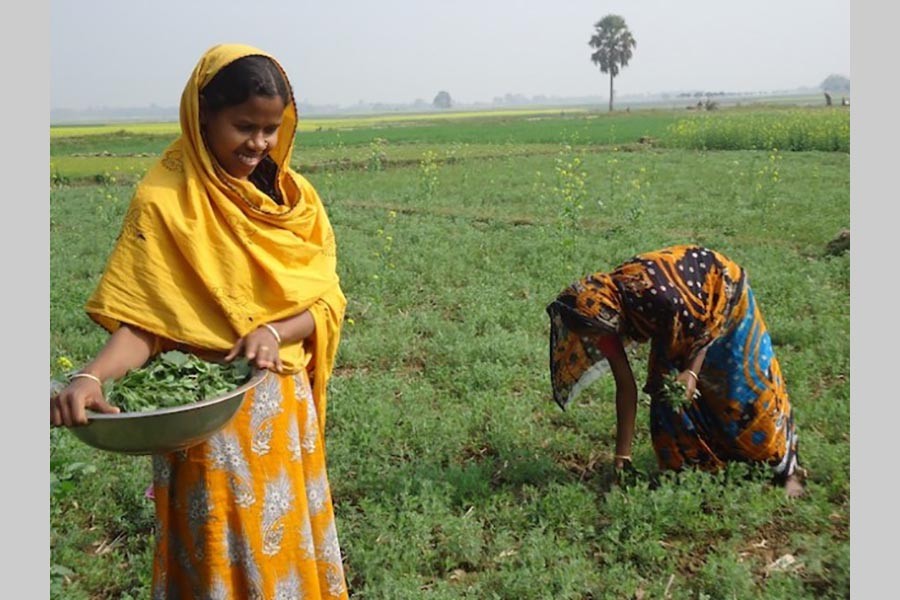Labour market in rural areas has undergone radical changes over the couple of decades. This owes both to demand and supply side effects. In the 1980s, for example, about 30 per cent of the income of functionally landless households used to come from agricultural labour compared to below 10 per cent in recent years. On the contrary, income from non-agricultural labour increased few folds pari passu increased demand for non-agricultural activities. In recent years, demand for construction works has gone up not only for migrant workers but also for domestic workers in rural areas. In urban areas, growth of ready-made garment (RMG) industries, transport and construction enhanced labour demand.
The composition of labour has also changed. The importance of attached workers or bandha mojur, once pervasive in rural areas, has diminished over time. The average number of attached worker per household has also come down. Causal workers, known as Dinmajur or Kamla, are hired on a daily basis depending on the need for a job. They are paid wages on a daily basis at the prevailing market rate. The working hours vary from 6 to 12 hours depending on the type of work. Various field-level data show that the share of labour under this system has also declined over time.
However, contract workers, also called chukti or thikamujur, are hired to complete a specific task for a piece-rated wage. The rate depends on the size of the parcel of land on which the work has to be done. This type of labour contract has been gaining importance over causal labour in rural Bangladesh over time for two reasons - shortage of labour and increased costs of supervision and monitoring for the works. For example, a causal worker is supposed to receive the stipulated amount at the end of the day, no matter what happens to the amount of the work. Hence, unless a family worker works along with them or someone from the owner's side supervises the work sitting on the aisle of the land, there remains an inducement for the hired labour to shirk labour. On the other hand, the piece-rated workers can increase earning by intensifying work efforts, working any time of convenience to the work team and finishing the work early. Thus, 'more work, more pay' principle would create a win-win condition for both the parties. By and large, our discussions during visits to sample villages tend to show that the system of contract labour has been spreading all over rural Bangladesh, but may be more in areas with better technology and infrastructure. Special mention may be made of contract labour used in transplantation: about 32 per cent compared to nine per cent in the distant past, and for threshing from 22 per cent compared to less than one per cent of the total land during the comparable period.
We shall close our discussions on rural labour market by making a reference to another type of labour, commonly found in earlier days, and is called exchange labour or bodlimujur. The labour exchange takes place mostly among a relatively homogeneous group of households to avoid social stigma of doing manual labour for others for cash payment. Several farms form a team and, in turn, supply family workers to complete farm operations within the group. Of course, the hiring households provide a good meal to the team of workers. This kind of transaction still continues based on trusts and networks, and there seems to be no major change over time.
And finally, a few words on the importance of the rural labour market. A common perception is that agricultural labour market is the most important source of employment for the rural workers. In fact, this had been the case in the past. For centuries, the main source of employment for the poorest segment of rural population had been the supply of labour in others' land. But the experiences of the recent past and our collected information tend to tell us a different story altogether. And that is, the importance of agricultural labour market as a source of employment for the poor has increasingly dwindled over time due to the opening up of new opportunities outside farms.
In the base year of our survey, for example, one-thirds of the total labour required used to come from outside farm households. In the most recent periods, the share has come down almost to half. The main source of employment for the poor labour is now non-farm activities having longer duration (250-300 days/yr) and hefty earnings which is 50-100 per cent more than agricultural labour. In conclusion, it can be argued that the rural labour market has turned out to be more flexible, injecting mobility of labour inside and outside agriculture.
By and large, and thanks to the expansion of non-farm activities and migration, rural labour market has grown tight over time tilting the wage rate in favour of the labour. It is thus no wonder that, real wage rate has increased to enhance entitlement of the poor. The final aspect of the changing rural labour market is that the quality of labour, as reflected by the average years in schooling, has marginally increased and labour productivity is on the rise.
As opposed to the Arthur Lewisian type of unlimited supply of labour with zero or negative marginal productivity, the pendulum has swung in favour of positive productivity. All that has been possible due to a sustained high economic growth rate supported by a favourable global climate.
Abdul Bayes is a former Professor of Economics at Jahangirnagar University.


